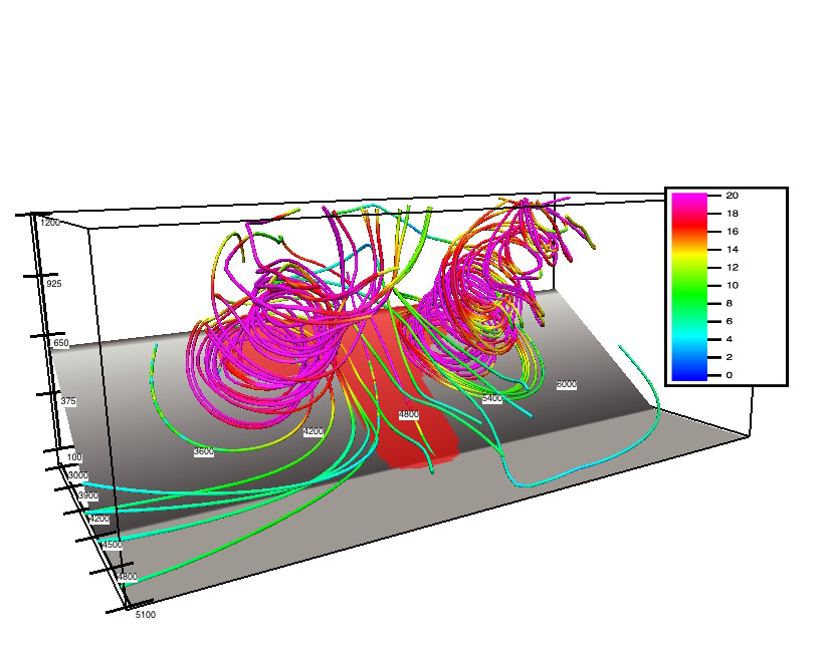Bushfires can cause devastating environmental and societal problems in Australia and other fire-prone parts of the world.
NCI's supercomputer facilities are enabling A/Prof Jason Sharples, expert in bushfire dynamics simulation and modelling from UNSW, and his team to use computer modelling to investigate, for the first time in the world, the dynamic fire spread caused by wind–terrain–fire interactions.
Sharples said a better understanding of the physical mechanisms that cause fire spread will lead to many environmental benefits for Australia and a decrease in the overall level of risk posed by bushfires.
"We have a poor fundamental understanding of fires even though they've been around for millions of years. There is a lot we still don't get.
"If we have a better understanding of the mechanisms that drive bushfires to spread, we will be able to improve environmental outcomes, risk mitigation planning and firefighter and community safety."

By combining experimental data, data from the field and numerical modelling, Sharples and his team are now starting to look at actual landscapes and can begin to apply the models to real life instances.
"We are now starting to make comparisons between model results, experiments and bushfire data so that we can begin to reconstruct the history of significant fires and how they evolved.
"This will help us understand how fires, such as the 2003 Canberra fires, spread across the landscape, and the processes driving them.
He said the work couldn't have been done without NCI's supercomputer.
"We use the Weather Research and Forecasting (WRF) numerical weather prediction model to conduct coupled fire–atmosphere modelling at very high spatial resolution.
"This means that the simulations are extremely computationally demanding and that they generate very large output data sets. The facilities at NCI are therefore critical to the success of this work.
"It takes about 14 hours for one run at NCI. If we didn't have access to the facilities then we wouldn't even attempt it because it would take too long."
Supported by ARC Indigenous Discovery Grants, Sharples said the research will help reduce the risks and impact of bushfires in the future.
"We have always known that a fire can significantly affect the weather in certain circumstances. This research is finally shedding light on this effect and is bringing a level of physical rigour to our understanding of the complex interactions that are now known to drive the escalation of bushfires to their most catastrophic states.
"This type of modelling is in its early stages, but as computational power increases, we will need to invest in these initial steps to take us into the future in terms of bushfire management and protecting the community."
He added that the research was recently used to inform the NSW Coroner's recommendations relating to the 2013 fires near Coonabarabran.
"Recommendations three, nine and fifteen all mention 'vorticity-driven lateral spread' or 'VLS' and there is also considerable mention of this phenomenon throughout the Coroner's report.
"NCI has been critical in advancing our understanding of VLS – the simulations that allowed us to confirm its existence and understand its physical drivers were all conducted at NCI."